Experiencing the Real “Belt and Road”
What I learned about China’s unseen reach in Central Asia
In early June, I traveled in Central Asia for 9 days, visiting two countries. I spent 2 days in Almaty, Kazakhstan, and 7 days in Uzbekistan, covering Tashkent, Samarkand, and Bukhara. These places are super important on the Silk Road, and the whole trip left me amazed. The close connections between Central Asia and China probably haven’t broken since the Tang Dynasty, and the unique mixed culture there really stood out. I can’t wait to share all the cool stuff I saw along the way with you.
On the Dragon Boat Festival, I spotted Empress Wu Zetian throwing rice dumplings in a mural
In a Sogdian mural from the 7th century in Samarkand, I spotted Empress Wu Zetian. Because she was so important, she was painted bigger than everyone else. In the mural, Wu Zetian and her crew were on a boat. A bunch of fish in the water were gathered around a center. Turns out, it was the Dragon Boat Festival, and Wu Zetian was tossing rice dumplings into the water to feed the fish. (The Dragon Boat Festival is all about commemorating the poet Qu Yuan, who drowned himself in a river. People throw food into the water on this day to stop fish from eating Qu Yuan’s body.) On the right side of the mural, a few cavalrymen were hunting leopards. It’s thought that Emperor Gaozong of Tang, Li Zhi, was hunting in the royal hunting ground.
As historians reckon, these murals were originally in the Sogdian king’s private residence. Apart from Chinese scenes, they also show envoys from different countries offering gifts to the Sogdian king. There’s even a wall that’s thought to depict India. To me, this royal private mural has a global perspective. It shows pride in their own culture and national might, as well as an imagination of foreign places.
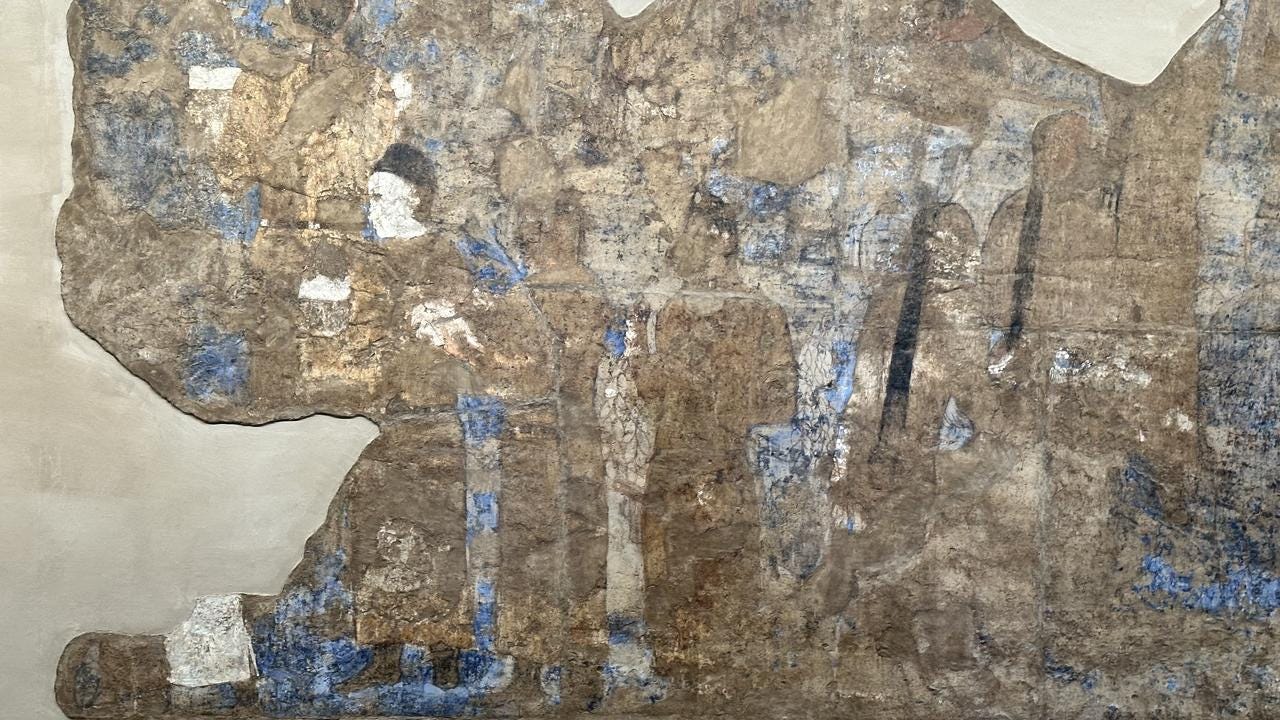
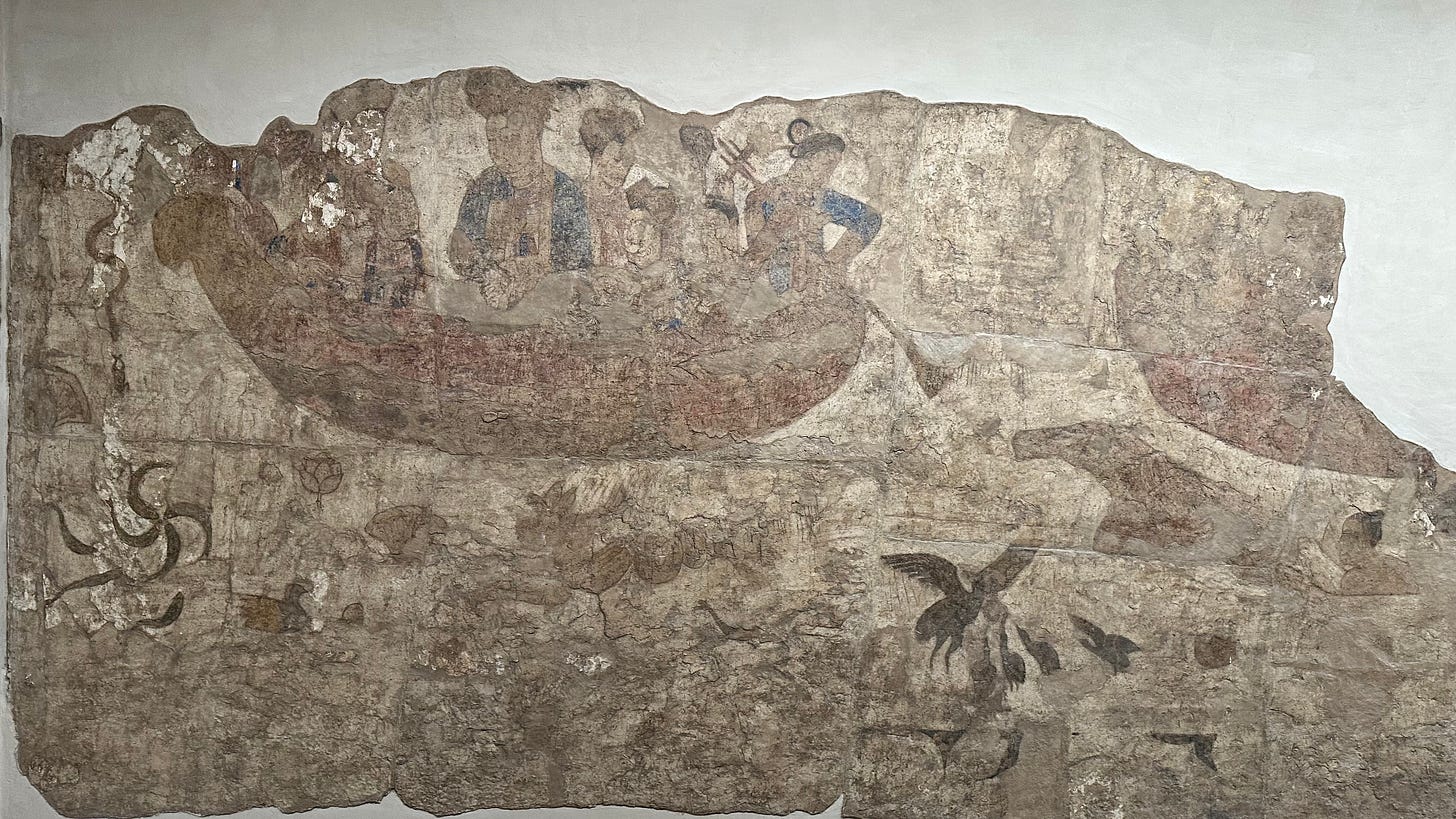
In a miniature painting shop in Bukhara’s old town, the shop owner put down the brush used for coloring and looked up from the intricate paintings. We noticed a painting themed on the Silk Road. Starting from China, it went through Samarkand, Bukhara, Khiva, and finally to Venice. The Chinese representative figure was Zhang Qian from the Han Dynasty. Behind Zhang Qian, there was a three-story wooden building, which was a modern Uzbek folk painter’s take on what China might look like.
Close trade ties: "I need to fly back to Almaty tomorrow because the governor of Jiangsu Province is coming," A Chinese businessman says.
We flew from Almaty, Kazakhstan, to Tashkent, the capital of Uzbekistan. Even before landing, it was clear that Uzbekistan and China have a close partnership. On the flight, there were many Chinese merchants and workers traveling in groups. It was easy to tell them apart: the merchants were usually in business suits and carrying laptop bags, while the workers wore work clothes; some carried a large bag of naan bread, and others had paint splatters on their trouser legs.
The man sitting next to my friend said he worked in supply chain management for a Chinese state-owned enterprise. He proudly showed my friend photos of his company's dormitories and cafeteria. He also mentioned that he had to fly back to Almaty the next day because the governor of Jiangsu Province was coming for a visit.
When we arrived at the airport, the sense of close cooperation was even stronger. The airport signs had Chinese translations, and there was a billboard in the walkway advertising the "UZ-China Silk Road Free Trade Special Zone."
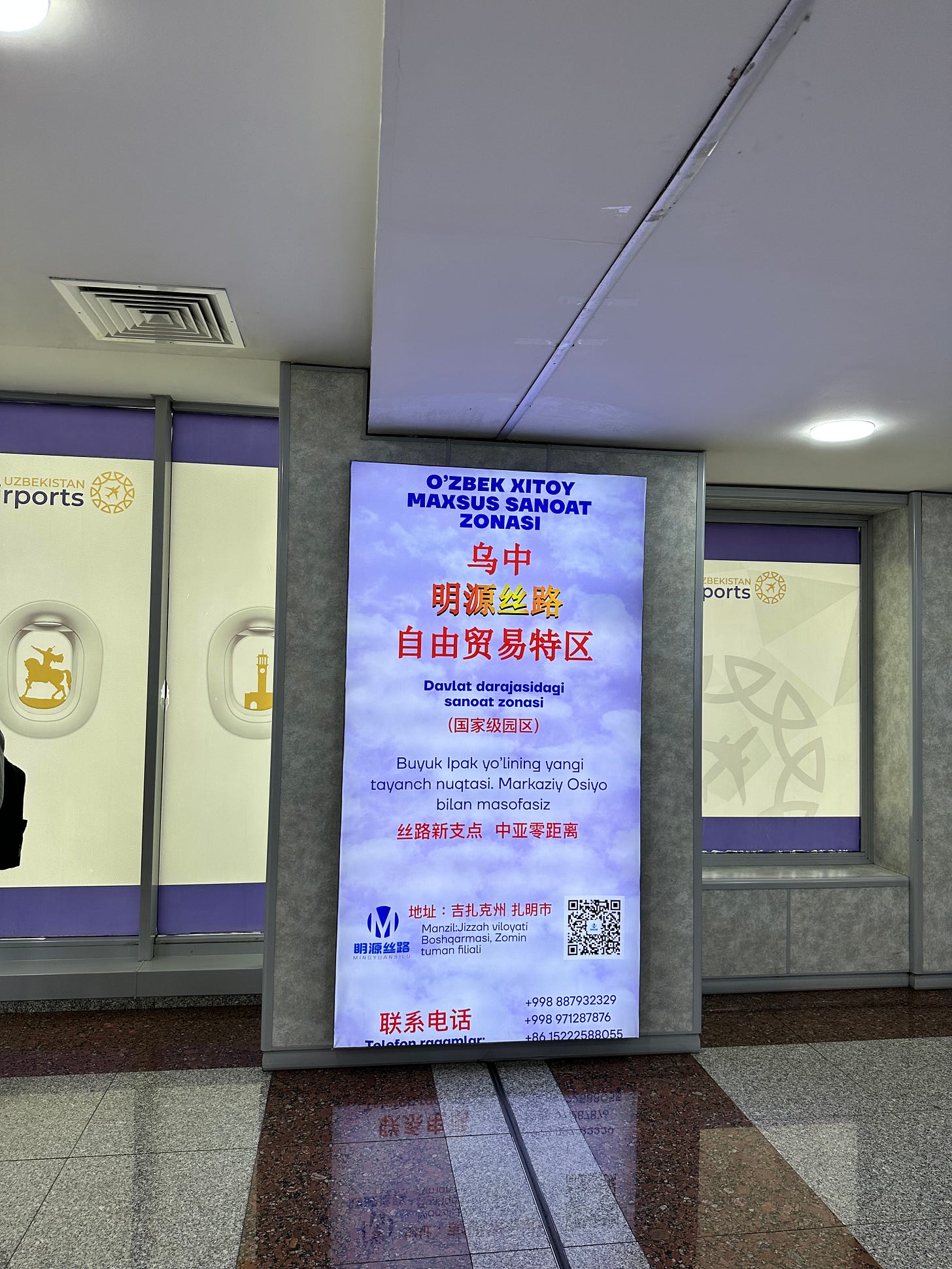
As the taxi sped along the highway into the city, I could tell where the Chinese workers from the plane were headed. Chinese cargo and work vehicles were everywhere on the roads.
Strolling through Samarkand's alleyways, a man greeted us with a smile and asked in Chinese, "Are you Chinese?" After some chat, we learned he was from Xinjiang, doing trade here. As a Hui ethnic, he said Xinjiang and Central Asia share similar languages, and he's now settled in Uzbekistan.
While we didn't meet any locals in Uzbekistan who'd been to China, in Kazakhstan, we met a Kazakh girl with fluent Chinese. We joined a day tour to the lakes and canyons near Almaty. With many Chinese tourists in our group, she translated for us when we couldn't understand the guide. She studied in Chongqing(*) and worked in Yiwu, Zhejiang province (*), where her Chinese boss ran a company exporting goods from China to former Soviet countries like Moscow, Azerbaijan, and Central Asian cities.
This made me feel that trade between China and Central Asia is largely a one-way flow, from China to Central Asia, with China's economic influence in the region being substantial.
*Chongqing is a bustling metropolis famous for its spicy hotpot and hilly landscape, while Yiwu is a global trading hub renowned for its massive wholesale market of small commodities. A fun fact: Yiwu International Trade City is the largest small commodity market in the world, exporting over 20,000 types of Christmas products to more than 100 countries, with Europe and the Americas being the primary markets.
Three stories about the consumer market: "Pants bought on Pinduoduo," "The best Li-Ning," and Chinese-style cosmetics never seen in China
A young man on the subway slapped his thigh and said, "These pants are from Pinduoduo." On the metro, a young man offered us his seat, saying, "A man with good manners will never let ladies stand." So we chatted, and he shared his love for shopping on Pinduoduo. He said the same items there cost 1/7 to 1/6 of local prices in Almaty. Even with a $3–4 delivery fee, it's still cheap, and delivery takes about two weeks.
Why are prices in Almaty so high? One reason is the Russia-Ukraine war. Our art-history student guide, a 26-year-old Kazakh girl, explained that many Russians have moved to Almaty to avoid military service. This influx has disrupted the housing and consumer market, pushing prices up. I asked if these newcomers were mostly wealthy, but she said no—they're mostly ordinary people; the wealthy go to "better" places.
Interestingly, when asked if locals can spot Russians, everyone said, "Of course! Their speech (though both in the Russian language) and dress are so different."
Anta, Lining, and Xtep stores in Tashkent's most modern shopping mall
At the Tashkent City Mall, the premier shopping destination in Uzbekistan's capital, I was surprised to find stores for well-known Chinese sportswear brands Anta, Li-Ning, and Xtep all located in close proximity.
I decided to explore the Anta store first. Picking up a pair of PG 7 running shoes (the PG 7 refers to the midsole technology), I noticed the price tag read 1,103,000 Uzbekistani som (approximately 612 Chinese yuan, US$87), which is significantly higher than the price in China (where it's around 200-300 yuan, US$29–43 on Tmall). However, the store currently has a promotion: buy one pair and get the second at 50% off (effectively 459 yuan per pair, US$66) or buy two pairs and get the third free (bringing the cost down to 408 yuan per pair, US$58). Even with the discounts, the price is still higher than in China. When I asked the store manager if Anta is considered a premium brand in Uzbekistan, he confirmed it is. Surprised, I inquired if only the wealthy can afford it. He explained that due to the popularity of digital payments, many people, especially the youth, opt for installment plans.
Buying Anta on installment? This reminds me of when Starbucks and Häagen-Dazs entered China. Back in my student days, sipping coffee at Starbucks or indulging in Häagen-Dazs was worth a social media post. Contemplating their current status in China makes me reflective...
Li-Ning’s store was bustling with activity due to its attractive discounts. New products like Soft Cool and Soft Go, priced at around 1,108 yuan (US$162), are much higher than in China (250–350 yuan, or US$35–49). But with a buy-one-get-two-free offer, the effective price drops to about 369 yuan (US$51), a better deal than Anta’s.
A staff member, an 18-year-old boy, said such discounts are rare, mainly for promoting new items. Li-Ning has 10 stores in Tashkent and is still expanding. Chatting with him, he shared that he prefers Li-Ning shoes for their unbeatable quality. When asked about other brands, he mentioned wearing New Balance replicas (originals are too pricey), highlighting Chinese brands’ edge of offering great value at low prices.
Chinese goods, yet nowhere to be found in China?
Another odd thing is that Central Asia has many Chinese-made beauty and skincare products that aren't available in China.
An example is "Shanghai Song," with packaging featuring a classic Chinese vintage design. The brand's slogan states: "Inspired by myths and legends, it's about Shanghai in the Song period, which ruled one of China's most glorious cultural eras in the long-flowing Eastern cultural river."
I found this puzzling. First, the specific myths or legends that served as inspiration aren't clear, giving it a mysterious and abstract feel. Second, to the best of my knowledge, during the Song Dynasty, the economic and cultural centers of the Northern Song were in Kaifeng, and those of the Southern Song were in Hangzhou, not in Shanghai. Perhaps "Shanghai Song" represents a blend of the modern and the classical, or maybe the company behind the brand has a special affection for Shanghai.
When I picked up a bottle of cream and examined it closely, I found that the company is based in Guangzhou. Well, it's likely that "Shanghai Song" is a brand from Guangzhou that embodies what Chinese people think Central Asians imagine about China and the East.
International trade is not a broad and smooth road, but a complex web
As researchers and data analysts, we're trained to focus on major contradictions and key factors, often overlooking minor elements. These key factors may be large countries, industries, or companies. People tend to focus on grand narratives, like the US-China rivalry, where Central Asia rarely features in it. But on visiting Central Asia, I saw how trade permeates everyday life, much like water seeping into every corner, and how commerce and products influence ordinary people's lives.
Our imagination of the Silk Road often depicts it as a broad, flat continent. In reality, it's a vast network of countless paths and stations. We tend to think of Silk Road trade and traders as large-scale and high-value. However, this isn't always the case. In the preface to the book From Dunhuang to Samarkand, it's mentioned that Chinese archaeologists discovered an ancient tomb near Turpan. Inside, they found a document recording the testimony of a Hu merchant living in China around 670 AD. The merchant asked the court to help him recover 275 bolts of silk owed to his deceased brother. This case reveals that actual trade volumes on the Silk Road were quite small. In this instance, just seven animals carried all the merchant's goods, including two camels, four oxen, and a donkey.
History is woven from countless minor events and overlooked characters. Without visiting Central Asia yourself, it's easy to mistakenly view history and global dynamics as simplistic and grandiose narratives.
On the last day of the trip, we were looking for the museum in Tashkent that houses the world's oldest Quran. Most of the area was cordoned off for renovation, making it hard to find. Suddenly, we passed several stacked containers, one of which read "China Shipping Group". Uzbekistan is a doubly landlocked country, meaning it has no sea access, and neither do any of its neighbors. It's one of the countries farthest from the sea. One can only wonder how the container of China Shipping Group made its way here.



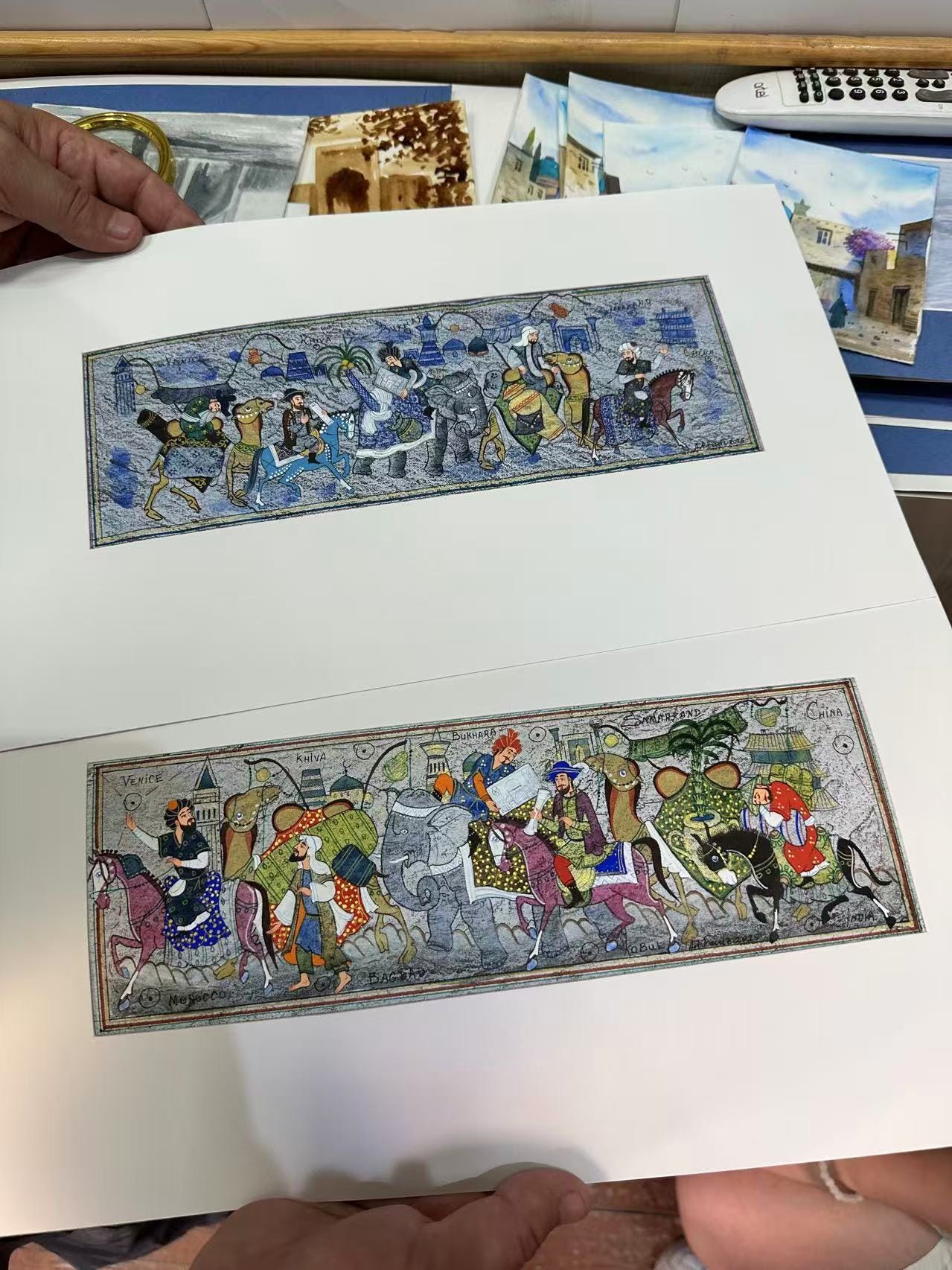
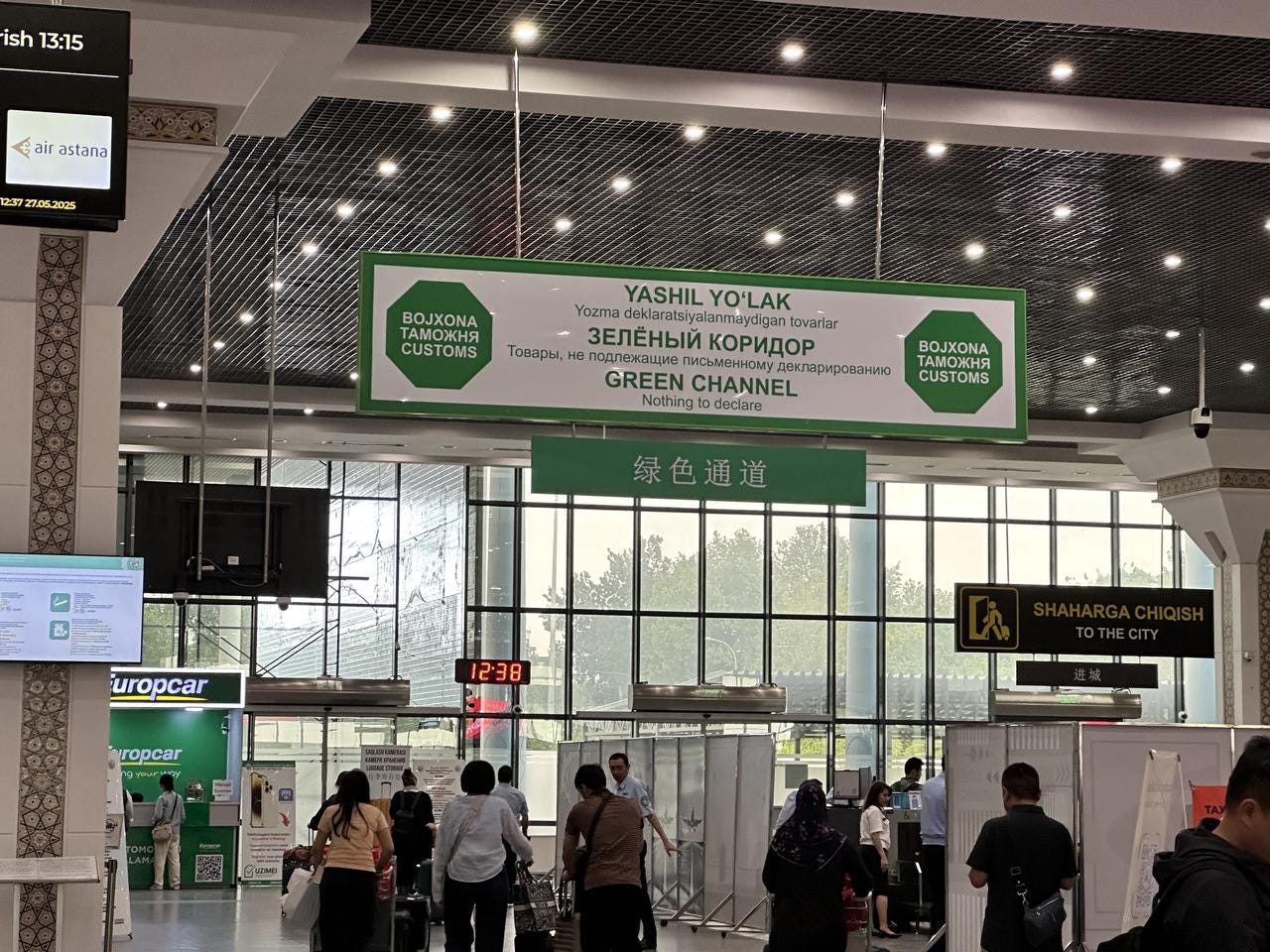
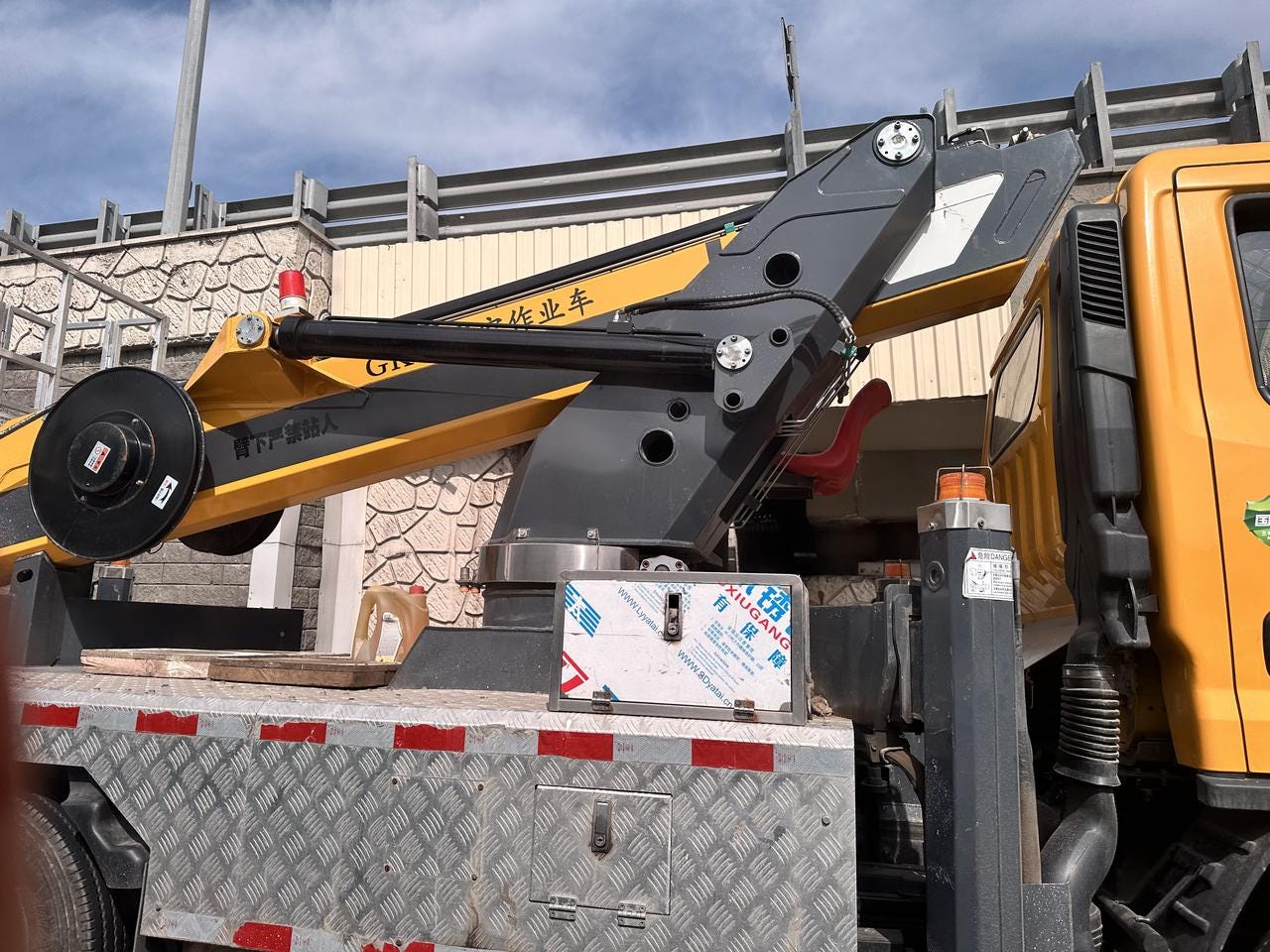
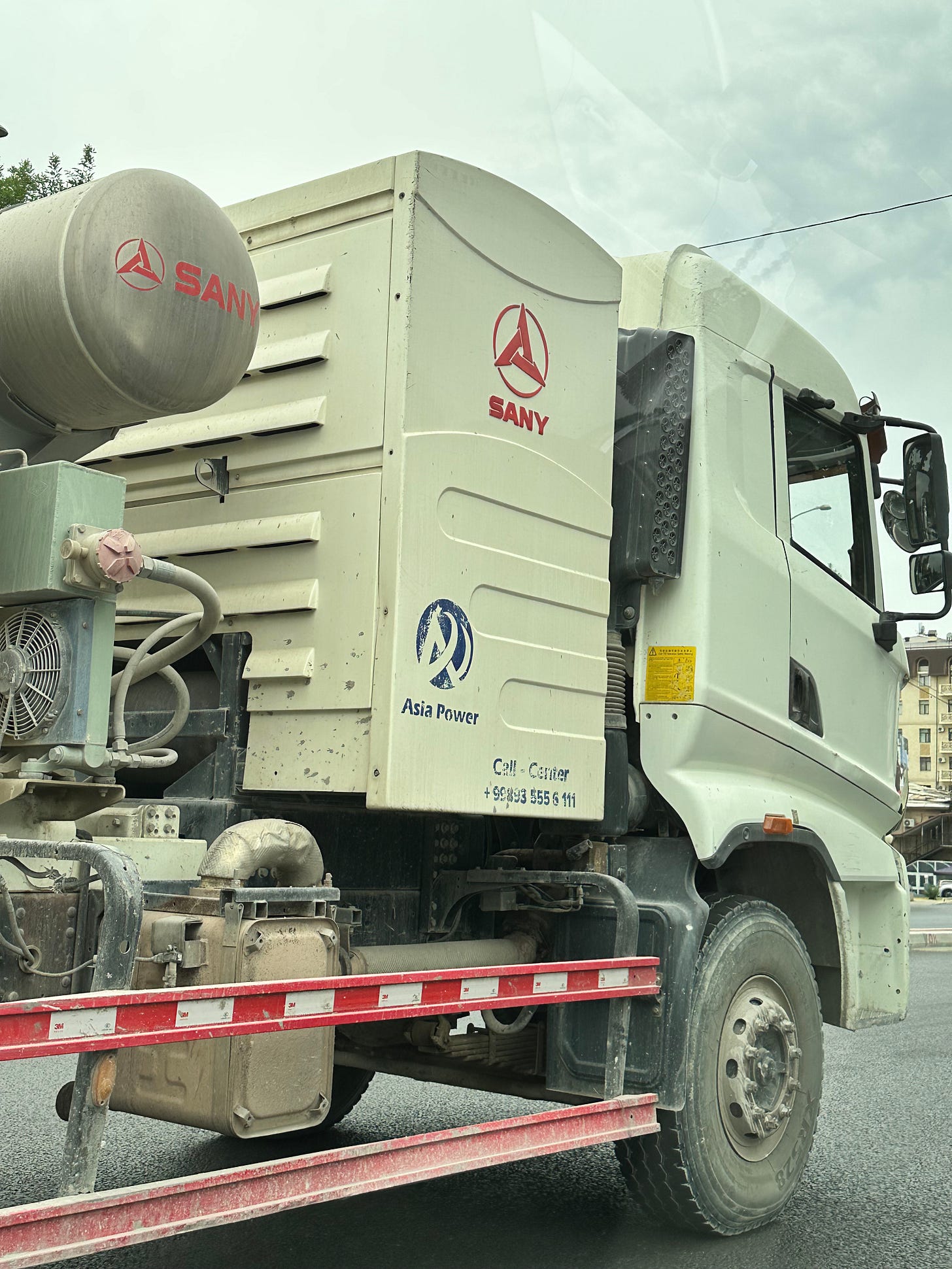
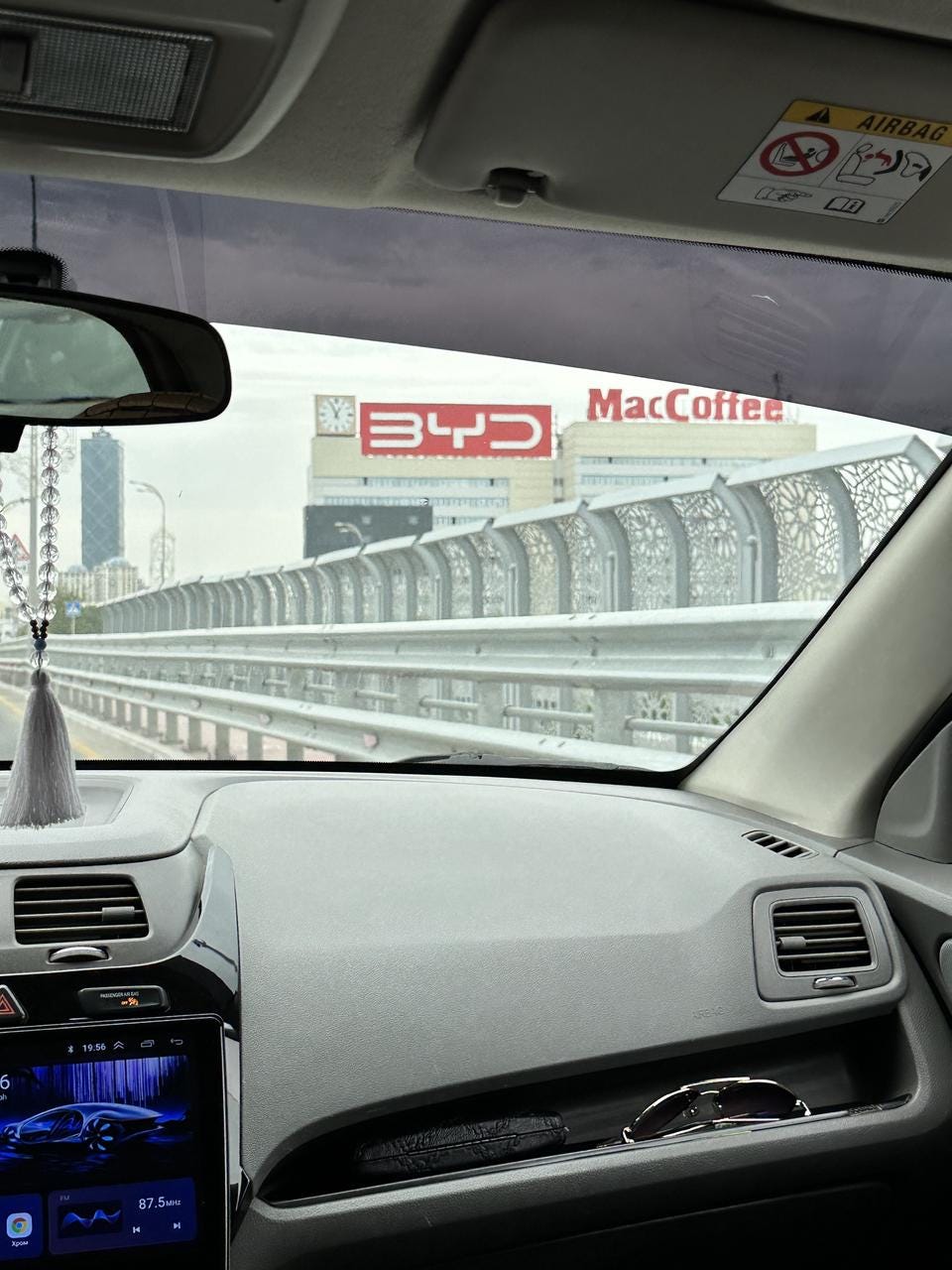
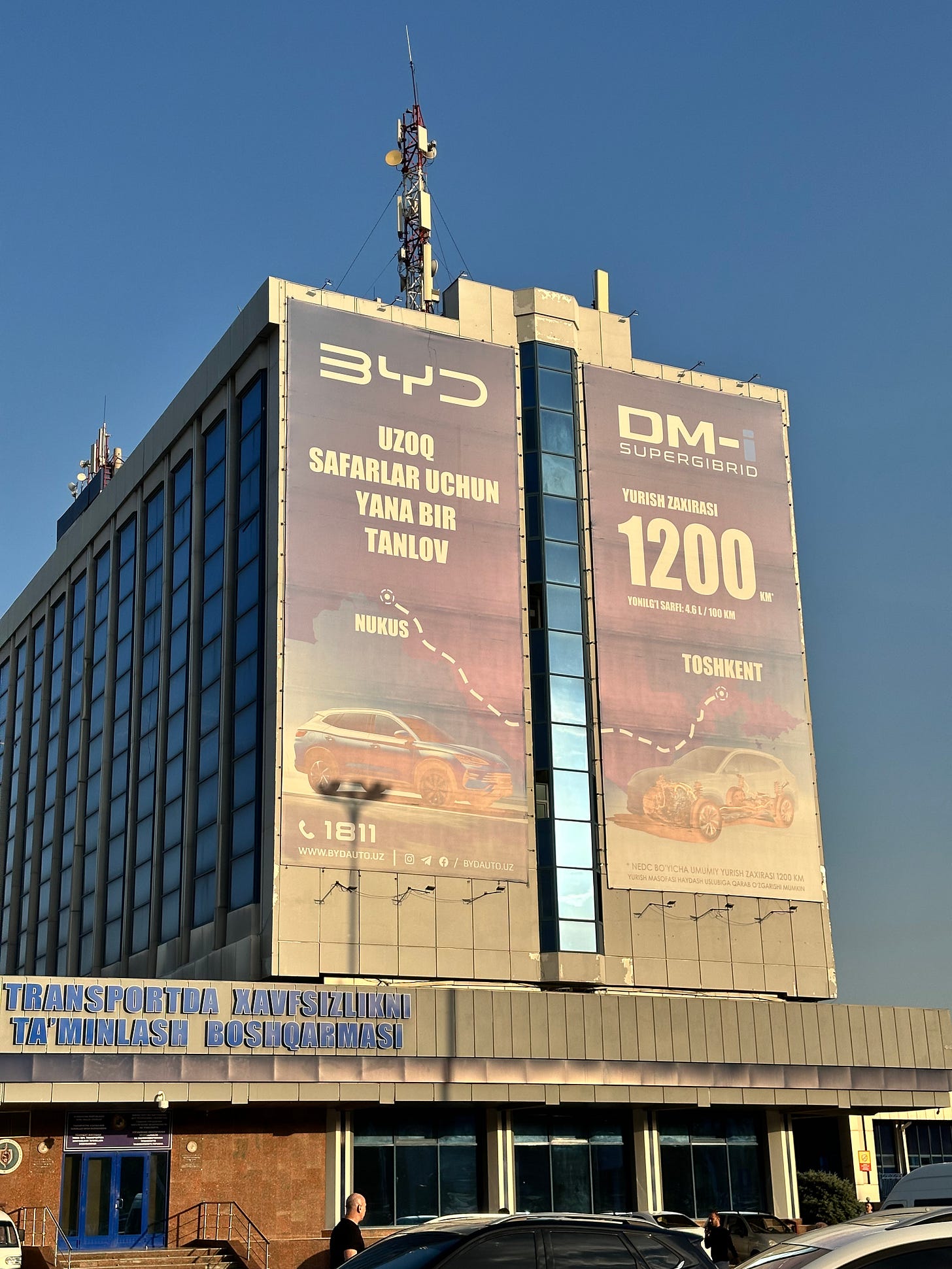
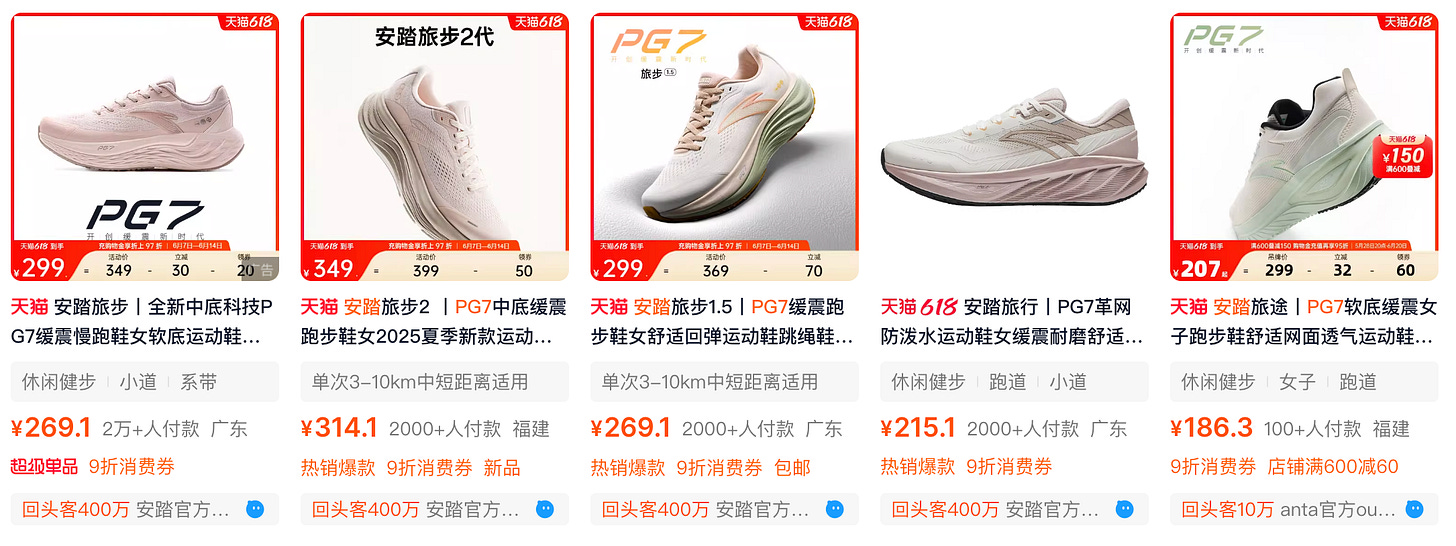

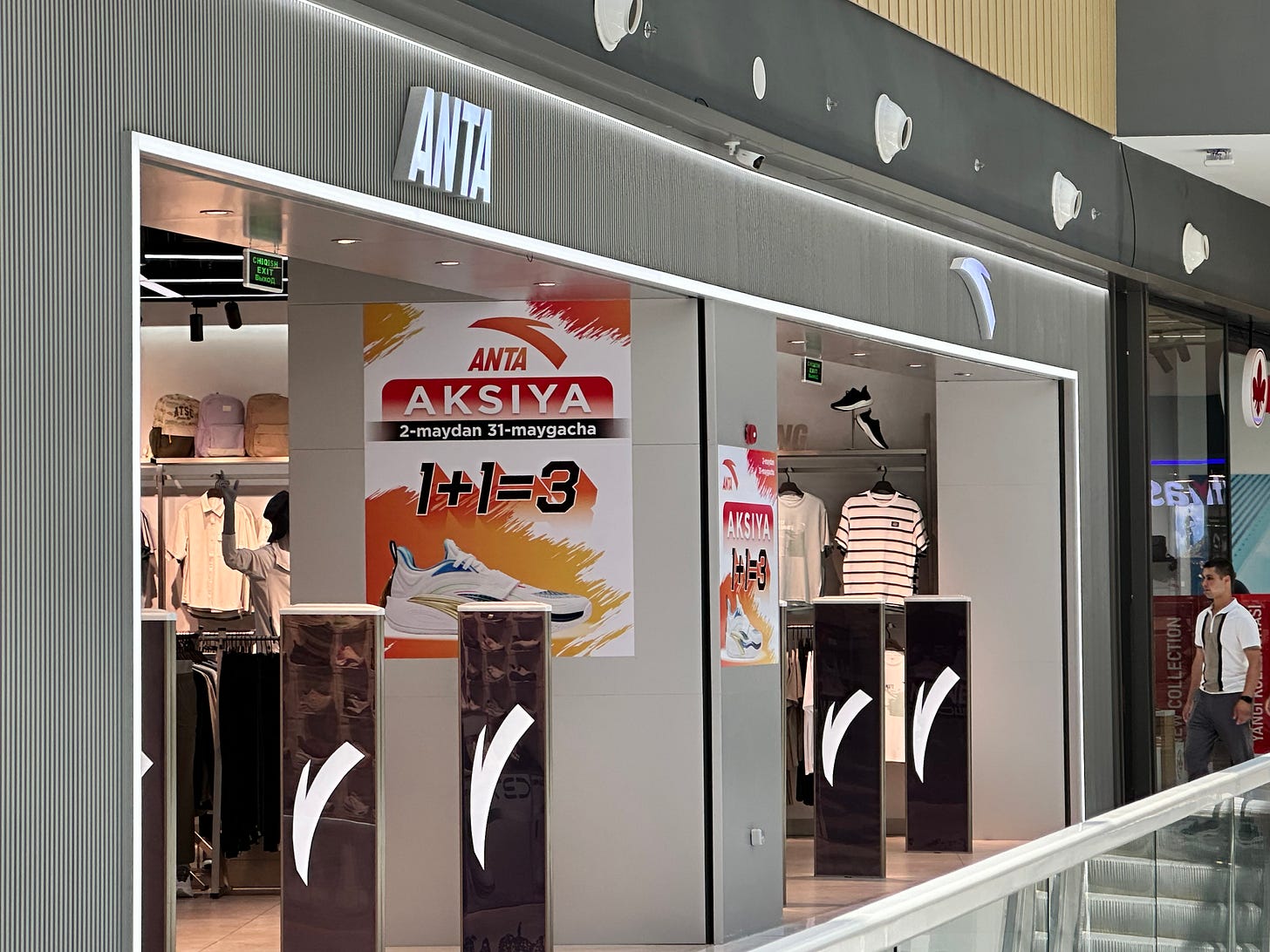
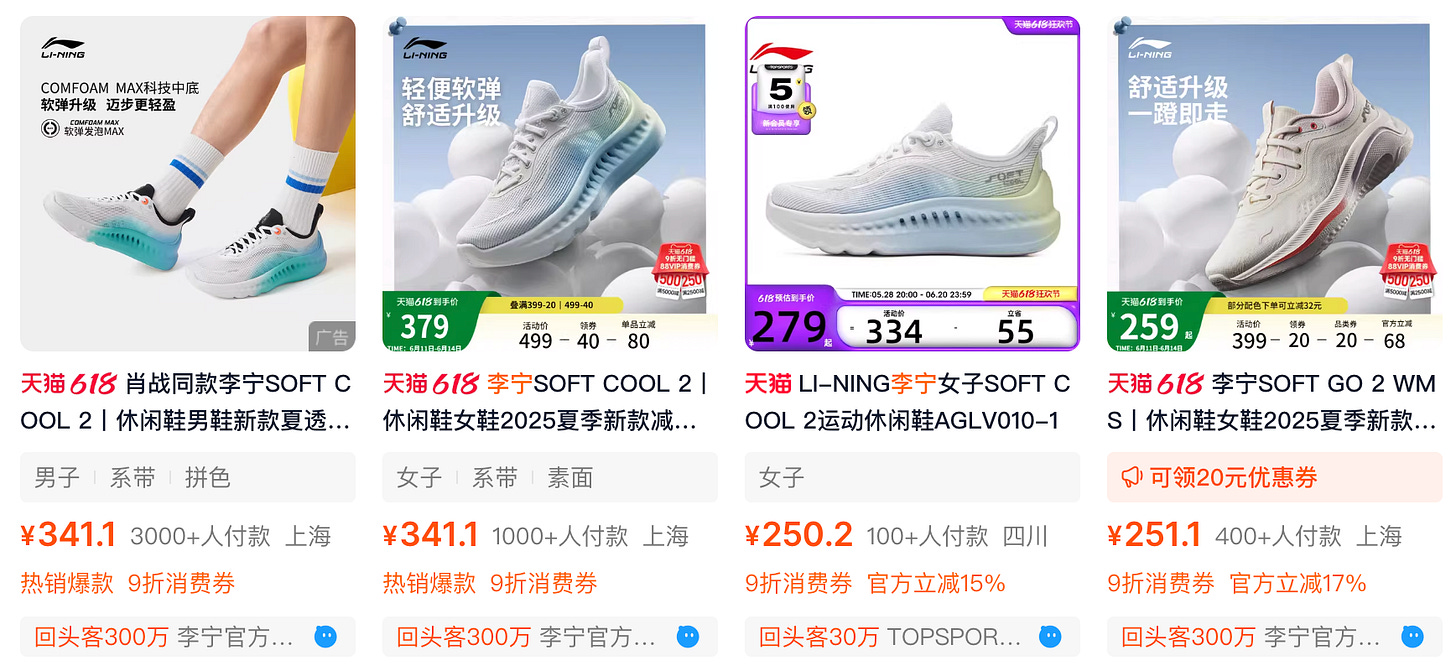

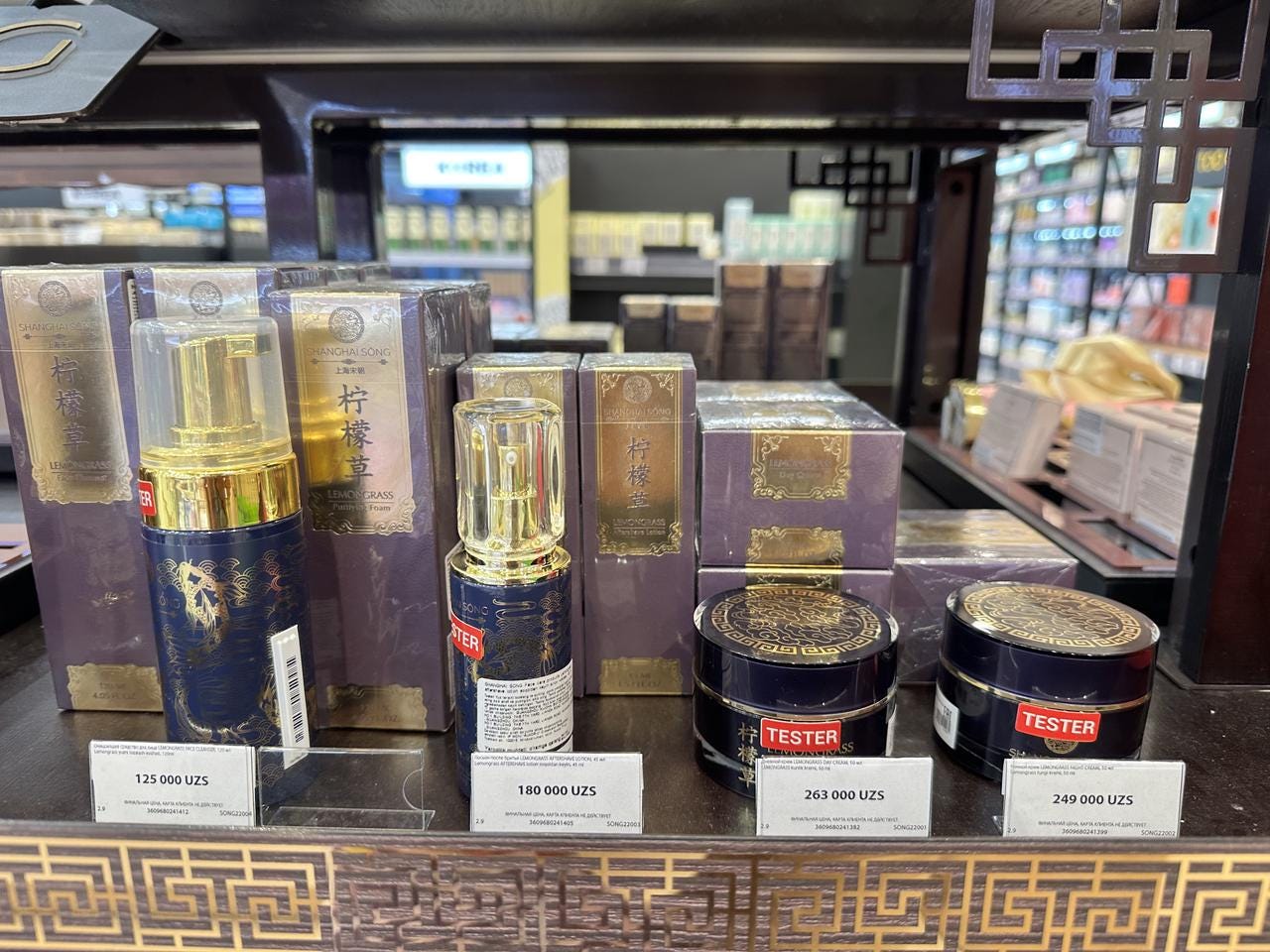
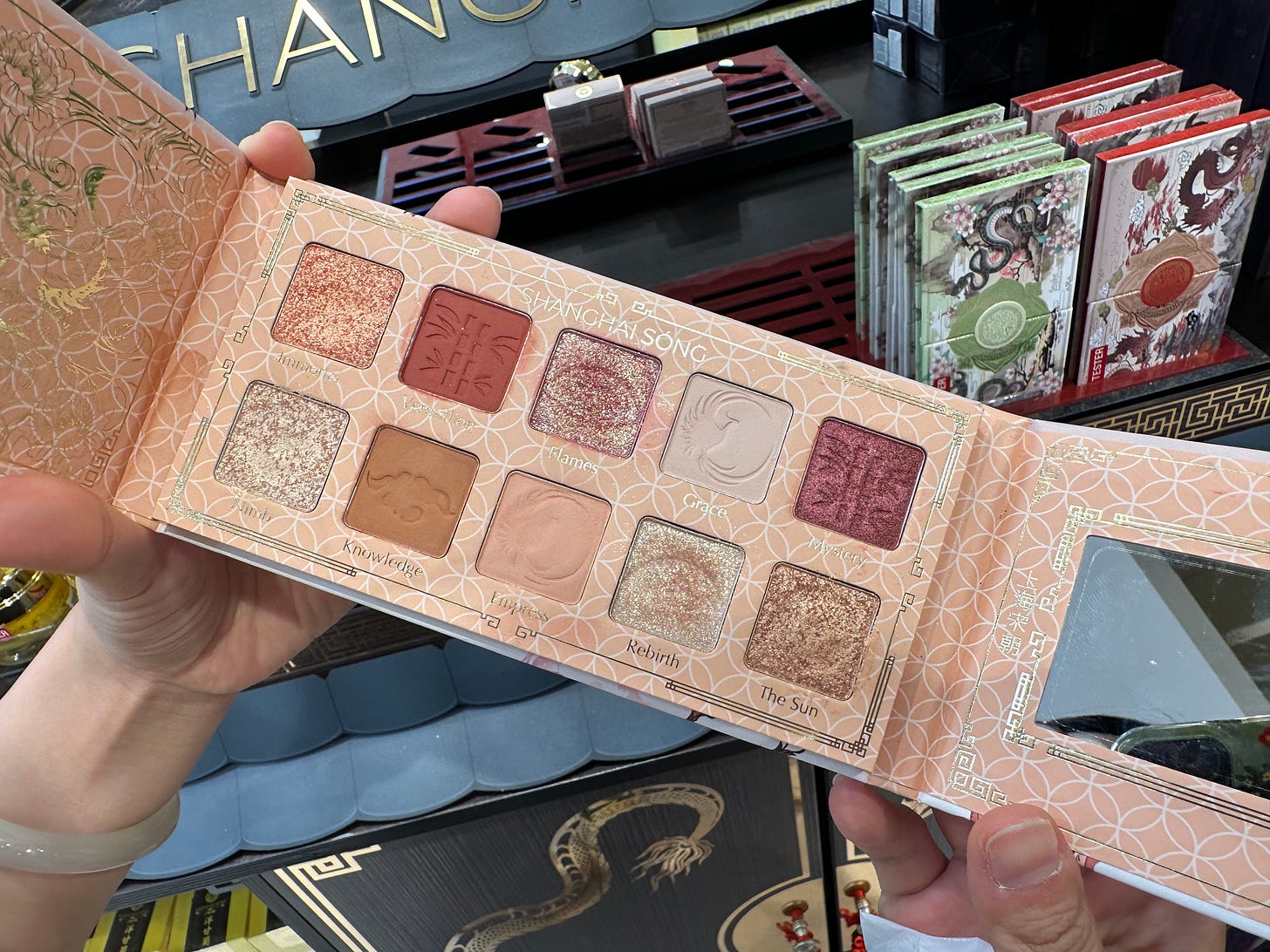
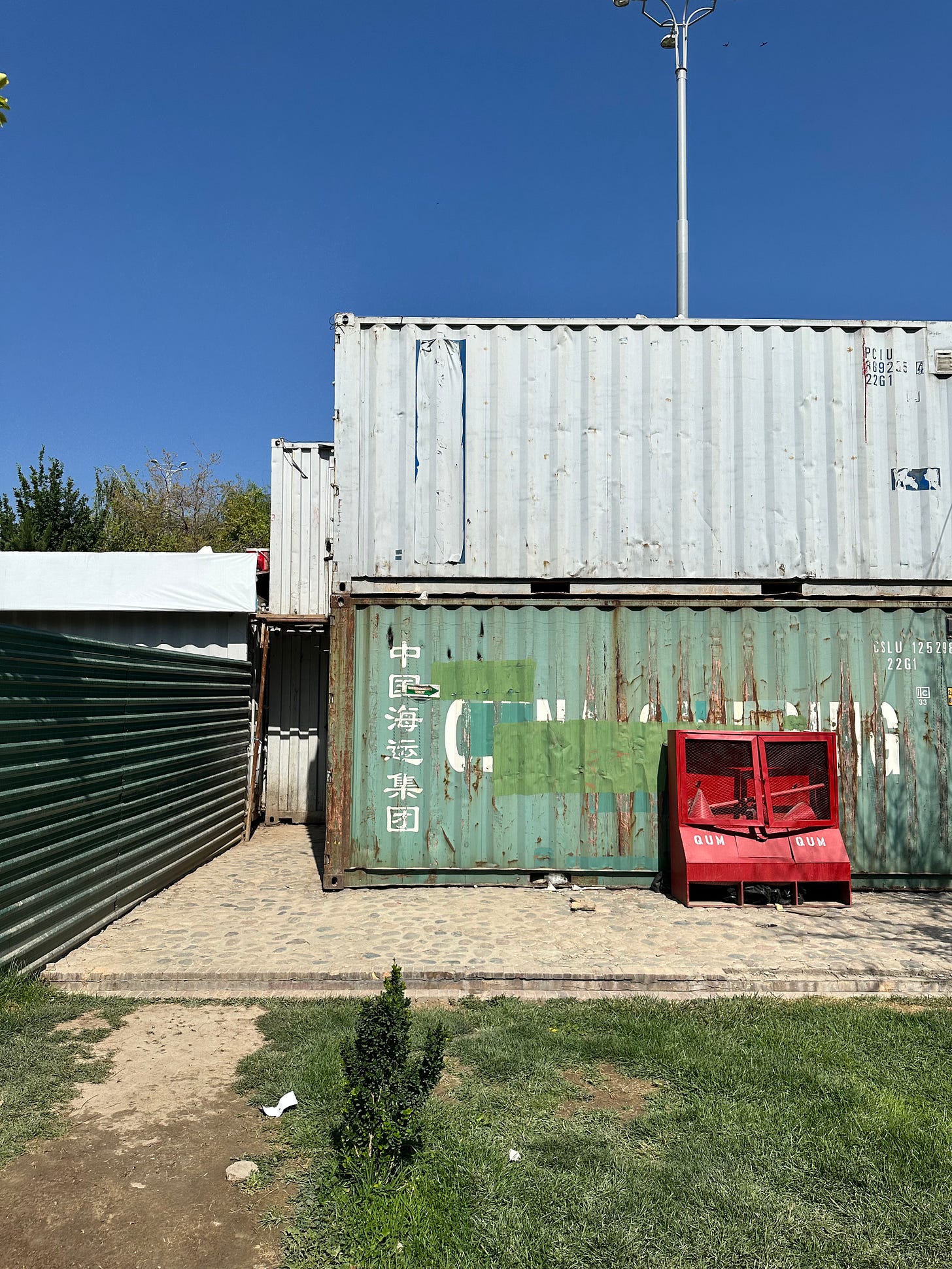



Terrific note. Learned a lot. Thanks.